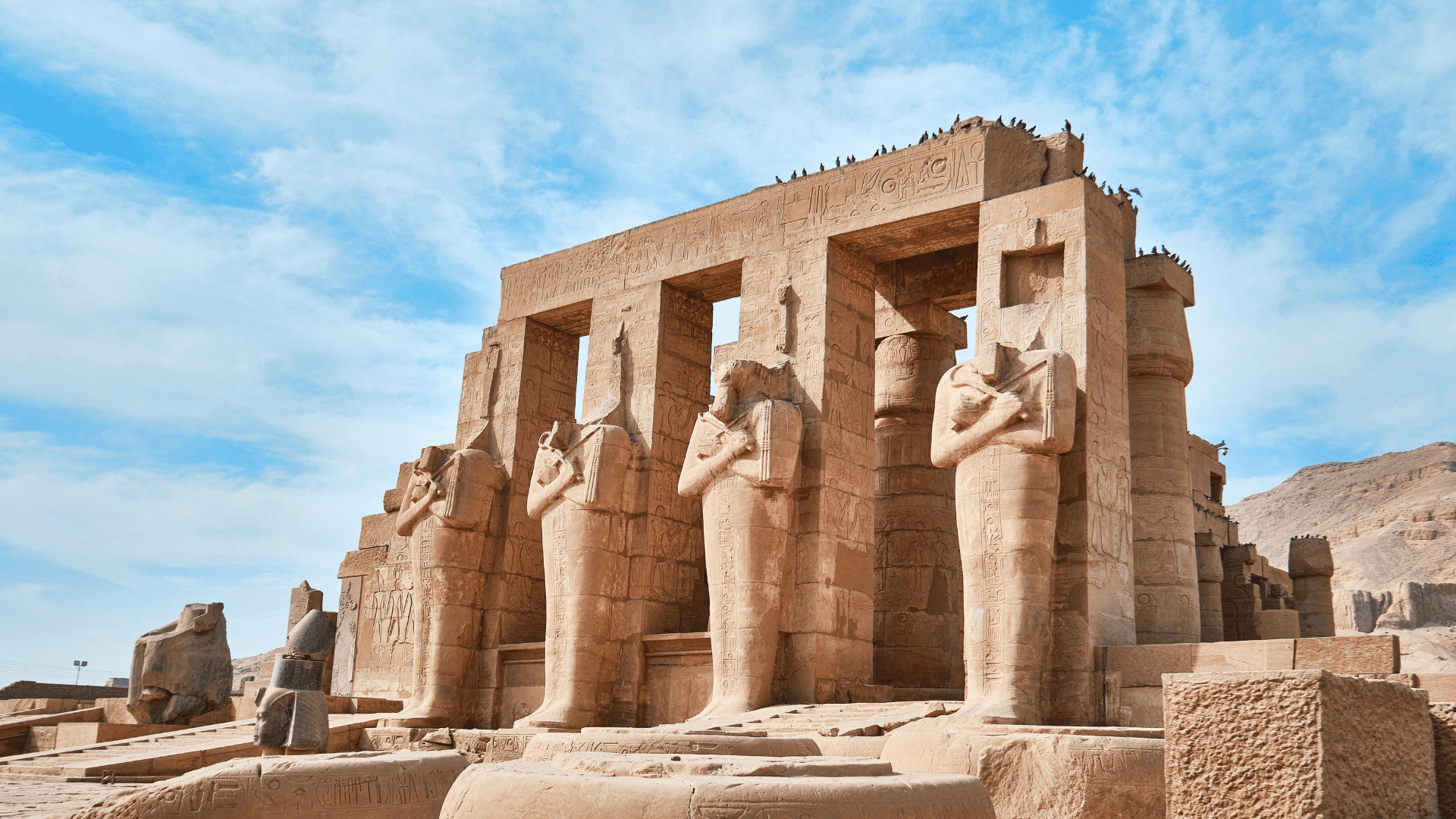Archaeologists excavating the Ramesseum Temple at Luxor have announced a series of finds, including the remains of drawings, school toys, and storage areas that once held oil, honey, and wine.
Ramesseum Temple

The new findings allude to the idea that the Ramesseum Temple near Luxor, Egypt, wasn’t just a religious symbol or burial site but also a site of cultural significance and economic prominence. Archaeologists have discovered ancient workshops, storehouses for food, a “House of Life” scientific school, and administrative offices.
Mohamed Ismail—secretary general of Egypt’s Supreme Council of Archaeology—said in a translated statement that the Ramesseum Temple was not just a place of worship. The site appears to have been a place for scientific study, artisan makers, and manufactured products.
Led by the Archaeological Preservation and Registration sector of Egypt’s Supreme Council of Archaeology, the French National Research Centre, and Sorbonne University, the latest project involved excavating 2,500-year-old tombs at the Ramesseum. In an area northeast of the temple, the team examined ruins to unveil tombs from the Third Intermediate Period.
The team found canopic jars and 401 shabti figures, which are small statues designed to look like the deceased. They uncovered storage areas that held honey, fats, oil, and wine with ancient wine labels. Researchers also located administrative buildings and workshops for stonemasons, bakers, and weavers.
The temple held evidence of the House of Life scientific school, a school focused on architecture known to exist within temples. Further evidence of the school was found in the form of toys and drawings.
Researchers have stated that the site was used before the pharaoh Ramesses II built his temple there during his reign from 1279 to 1213 B.C. They also believe the area was repurposed into a tomb before being used by quarry workers in the Baltic and Roman eras.
Ismail stated that the findings also indicate the presence of a hierarchical system for civil servants within the temple.







